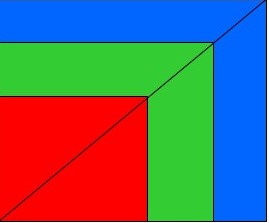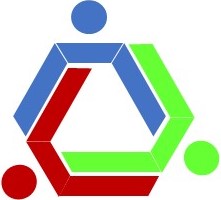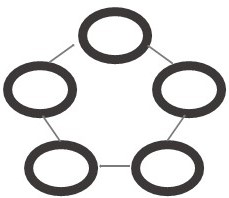Understanding Social Styles (Session 1-A)
 Social Styles are observable behaviors that can allow you to make informed choices to make that person comfortable. The power of the Social Style model is when we know ourselves through the eyes of others, learn how to modify our actions and better match others’ needs in communicating, influencing and improving others. In this session we will learn the two dimensions of behavior and how to apply them in regards to the Style Model. Using behavioral indicators, we will determine practical strategies for dealing with difficult individuals.
Social Styles are observable behaviors that can allow you to make informed choices to make that person comfortable. The power of the Social Style model is when we know ourselves through the eyes of others, learn how to modify our actions and better match others’ needs in communicating, influencing and improving others. In this session we will learn the two dimensions of behavior and how to apply them in regards to the Style Model. Using behavioral indicators, we will determine practical strategies for dealing with difficult individuals.
Situational Leadership (Session 1-B)
 Situational Leadership is a leadership style that has been developed and studied by Kenneth Blanchard and Paul Hersey. Situational Leadership refers to when the leader of an organization must adjust their style to fit the development level of the followers they are trying to influence. With situational leadership, it is up to the leader to change their style, not the follower to adapt to the leader’s style. In this session we will learn how to determine someone’s capabilities and how those capabilities determine which leadership style to use. We will walk through the application of the model using real examples.
Situational Leadership is a leadership style that has been developed and studied by Kenneth Blanchard and Paul Hersey. Situational Leadership refers to when the leader of an organization must adjust their style to fit the development level of the followers they are trying to influence. With situational leadership, it is up to the leader to change their style, not the follower to adapt to the leader’s style. In this session we will learn how to determine someone’s capabilities and how those capabilities determine which leadership style to use. We will walk through the application of the model using real examples.
Change Management Session 2-A)
 There is a science to change. Most people do change wrong. Understanding where to align your resources around a change effort can mean the difference between success and failure. In this course we will review several models that explain the effects of change. We will discuss the psychological and business impact of change. We will review the best ways to increase the success of a change effort.
There is a science to change. Most people do change wrong. Understanding where to align your resources around a change effort can mean the difference between success and failure. In this course we will review several models that explain the effects of change. We will discuss the psychological and business impact of change. We will review the best ways to increase the success of a change effort.
Lominger Method (Session 2-B)
 Based on the research through the Center for Creative Leadership, the Lominger Method is the utilization of the 67 competencies and 19 negative traits. Armed with these behavioral traits a leader can determine positive areas of behavior that need to be nurtured and negative behavior that need to changed or weeded out. You can use the Lominger Method in hiring, counseling, performance management and career discussions. We will work through exercises that allow the participants to get a feel for the tool.
Based on the research through the Center for Creative Leadership, the Lominger Method is the utilization of the 67 competencies and 19 negative traits. Armed with these behavioral traits a leader can determine positive areas of behavior that need to be nurtured and negative behavior that need to changed or weeded out. You can use the Lominger Method in hiring, counseling, performance management and career discussions. We will work through exercises that allow the participants to get a feel for the tool.
Culture (Session 3-A)
 A company’s culture is one of the most important parts of the business. There is an expectation that everyone already knows what culture is. This course is the first step in putting leaders on the same page regarding what is culture. We will examine the importance of vision, mission and goals and how it relates to the business. This course is designed to connect a company’s culture with the company’s results.
A company’s culture is one of the most important parts of the business. There is an expectation that everyone already knows what culture is. This course is the first step in putting leaders on the same page regarding what is culture. We will examine the importance of vision, mission and goals and how it relates to the business. This course is designed to connect a company’s culture with the company’s results.
Interviewing (Session 3-B)
![]() One of the most important things a leader does for an organization is hire employees. Unfortunately, most companies invest no time in ensuring a leader knows what they are doing. In this section we will discuss the employment laws associated with doing hiring right. We will walk through the hiring process. We will also learn the basics of behavioral based interviewing.
One of the most important things a leader does for an organization is hire employees. Unfortunately, most companies invest no time in ensuring a leader knows what they are doing. In this section we will discuss the employment laws associated with doing hiring right. We will walk through the hiring process. We will also learn the basics of behavioral based interviewing.
Project Management (Session 4-A)
 Being successful is more than merely doing your day job. To be seen as a successful leader you need to be a top performer on projects. Projects are those activities that move a business forward. We will review the necessity of creating a project charter and all of the associated information needed to complete the project charter. We will become familiar with some basic project management tools like work breakdown structures, Gantt charting and mile stoning.
Being successful is more than merely doing your day job. To be seen as a successful leader you need to be a top performer on projects. Projects are those activities that move a business forward. We will review the necessity of creating a project charter and all of the associated information needed to complete the project charter. We will become familiar with some basic project management tools like work breakdown structures, Gantt charting and mile stoning.
Coaching, Discipline & Performance (Session 4-B)
 Becoming a coach takes practice. Not everyone has the natural ability. We will identify what a coach is, how they behave and how they treat others. In this section we will also walk through when and how to use progressive discipline. We will finish this session with how to write and conduct performance reviews. We will identify common mistakes and develop strategies for avoiding those mistakes.
Becoming a coach takes practice. Not everyone has the natural ability. We will identify what a coach is, how they behave and how they treat others. In this section we will also walk through when and how to use progressive discipline. We will finish this session with how to write and conduct performance reviews. We will identify common mistakes and develop strategies for avoiding those mistakes.
Meeting, Presenting & Organizing (Session 5-A)
 One of the easiest ways to fail as a leader is to be disorganized. In the session we will learn how to run an effective meeting. How to prepare for meetings and deal with meeting issues. Additionally, creating effective presentations is a skill. We will walk through how to make effective PowerPoint presentations. Finally, we will use David Allen’s book “The Art of Stress-Free Productivity” to give us a model on how to be more organized.
One of the easiest ways to fail as a leader is to be disorganized. In the session we will learn how to run an effective meeting. How to prepare for meetings and deal with meeting issues. Additionally, creating effective presentations is a skill. We will walk through how to make effective PowerPoint presentations. Finally, we will use David Allen’s book “The Art of Stress-Free Productivity” to give us a model on how to be more organized.
The Power of the P&L & Statistical Control (Session 5-B)
 Many leaders who get promoted have no formal training on basic business numbers. We walk through the basics in this session. We discuss the P&L, chart of accounts and analysis methods. One of the big learnings is the effect of cash flow on the business. In this section we also go other basic statistical methodologies like a tally sheets, Pareto charting and fishbone diagraming.
Many leaders who get promoted have no formal training on basic business numbers. We walk through the basics in this session. We discuss the P&L, chart of accounts and analysis methods. One of the big learnings is the effect of cash flow on the business. In this section we also go other basic statistical methodologies like a tally sheets, Pareto charting and fishbone diagraming.
Teams (Session 6-A)
 Teams is another behavioral based activity where there is a lot of science to help one understand the landscape. In this session we will go over the basic process of team development – Forming, Storming, Norming & Performing. We will review what the leaders role in each stage is as well as learn practical tools for easing the process.
Teams is another behavioral based activity where there is a lot of science to help one understand the landscape. In this session we will go over the basic process of team development – Forming, Storming, Norming & Performing. We will review what the leaders role in each stage is as well as learn practical tools for easing the process.
Continuous Improvement (Session 6-B)
 A cap-stone to the series. We review the basics of Continuous Improvement. We walk through the differences of many of the more common types of CI. We learn about the seven forms of waste – how to identify and how to overcome. We review examples of 5S and discuss how to use the process in daily work. We learn what the theory of constraints is and how to identify bottlenecks.
A cap-stone to the series. We review the basics of Continuous Improvement. We walk through the differences of many of the more common types of CI. We learn about the seven forms of waste – how to identify and how to overcome. We review examples of 5S and discuss how to use the process in daily work. We learn what the theory of constraints is and how to identify bottlenecks.